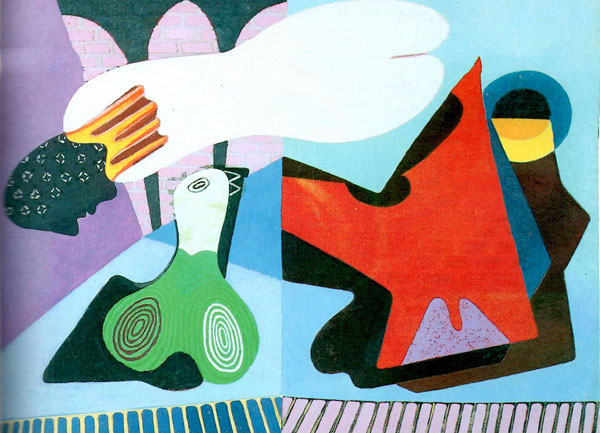
Painting by Heinrich Maria Davringhausen
Nick Hodge reports
On 19 July 1937, Hitler and Joseph Goebbels, Germany's Reich Minister of Propaganda, launched an exhibition at Munich's Haus der Kunst, devoted to “degenerate art.”
The show, which would travel throughout Germany and Austria over the next three years, ultimately drew in over 3 million visitors.
Yet although the works on show may have titillated viewers, the pictures were not chosen for their propensity to charm. Rather, they were held up as a showcase of all that was most despicable in the eyes of the regime. According to the 1937 exhibition catalogue, the art revealed “the morbid excesses of insane and depraved people,” who were “advancing the subversion of form and colour.”
In their “deliberate contempt for technical principles,” these artists represented “cultural ruin” and “cultural Bolshevism.”
In 1937 alone, Goebbels confiscated some 16,000 works of art from German museums. A large portion was sold off abroad, making a considerable profit for the Reich.
“Many of the artists committed suicide, as they could not find a way to live under the Nazis and felt that the only option was to kill themselves,” says Judith Schonwiesner, German co-curator of the Krakow show, in an interview with Polish Radio.
Scores of artists emigrated from the Reich, although often this was not enough to sooth their suffering.
“Ernst Toller [a left-wing playwright] went to New York, but he had no chance,” says Schonwiesner.
“He was frustrated. He was not able to speak the language, he had lost his family, he had no money. He didn't have anything.
“He was a destroyed person, and he felt that the only solution was to kill himself.”
The same fate befell Florenz Robat Schabbon.
“He was a very, very young artist,” Schonwiesner reflects.
Following persecution by the Nazis, he committed suicide in 1933.
“His family was so afraid that someone would find his paintings that they burnt most of them. These are just two people from so many. It's unbelievable what happened.”
Cracovian art historian Monika Rydiger, who curated the Polish section of the show, described how when the Nazis invaded Poland in 1939, artists faced persecution on many levels.
“The main objective for those hunting down artists was to trample on the Polish identity that they represented,” she says. “The next category was Polish Jewish artists, and finally, those that practised avant-garde art.”
All three are represented in the Krakow exibition, the boundaries often blurring between each group.
“Polish artists were often persecuted simply because they were members of the intelligentsia and thus considered a threat to the Nazi authorities," Rydiger continues.
Painter and teacher Jan Rubczak was among a group of artists and their acquaintances arrested en masse at Krakow's Dom Plastykow artists' cafe on 16 April 1942. He was later shot at Auschwitz.
Witold Hulewicz,a former manager of Polish Radio in Wilno (today Vilnius, Lithuania) fell victim in 1941. He was an outstanding translator who specialized in German literature. During the war, he was drawn into underground activity and was executed by the Nazis
“It didn't matter that he was such a fine translator of German literature and that he had tried to support German culture prior to the war,” Rydiger reflects. “That was of no consequence to the Nazis.”
Ironically, many of Poland's avant-garde artists had been influenced by pre-Nazi German trends, a factor that shines through in parts of the exhibition.
“Today we can see that there was a visible influence of German artists on their Polish peers,” Rydiger affirms.
“Many of Poland's artists had studied in German universities and art academies, and we can see how the Poles were deeply rooted in German culture - Expressionism was the most important point of inspiration.”
Judith Schonwiesner feels that the Krakow show represents a “very special cooperation” and hopes that much more work will be done in this field.
“For Poles, it's important to see that Germans too were persecuted by the Nazis, and at the same time, it's important for Germans to see what the Nazis did in Poland – that they didn't just send Jews to concentration camps, they wanted to destroy Poland's entire culture.”
“Hunting down Modernism” runs at the International Cultural Centre, Krakow, until 29 January. It was co-organised by the Rhineland Regional Council and the Kunstmuseum in Muhlheim. (pg)